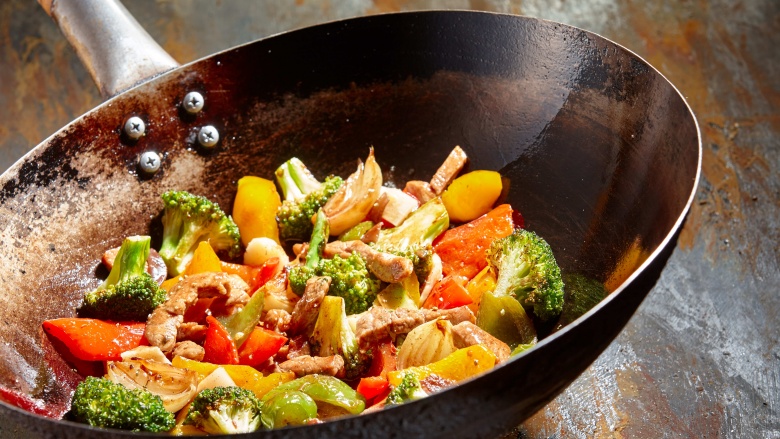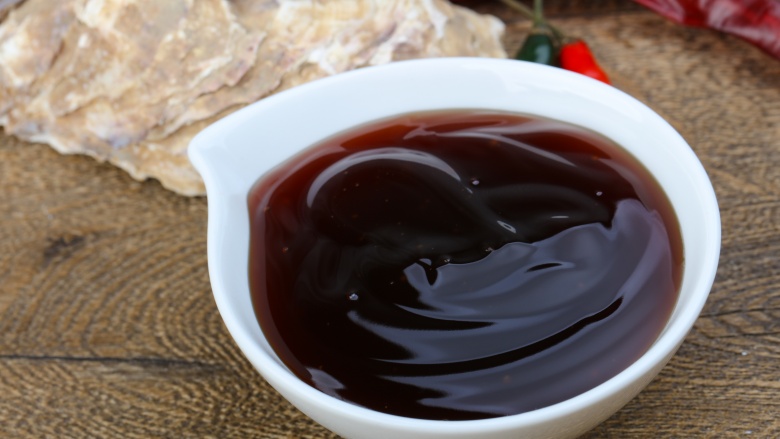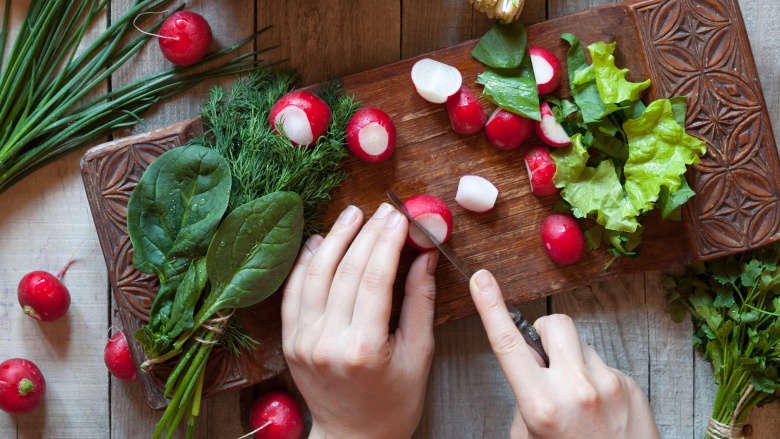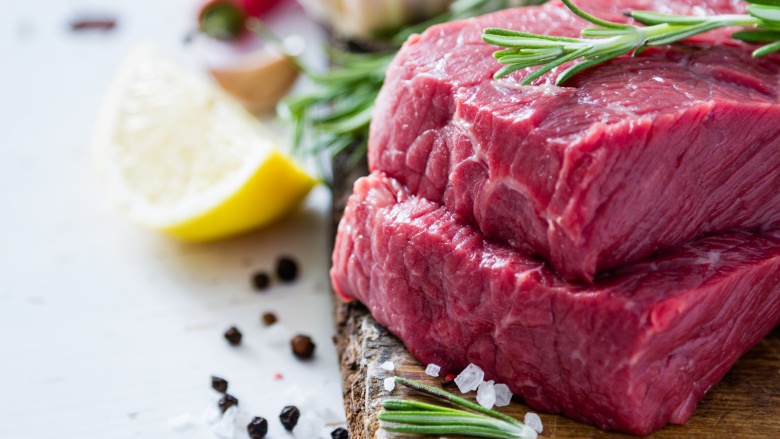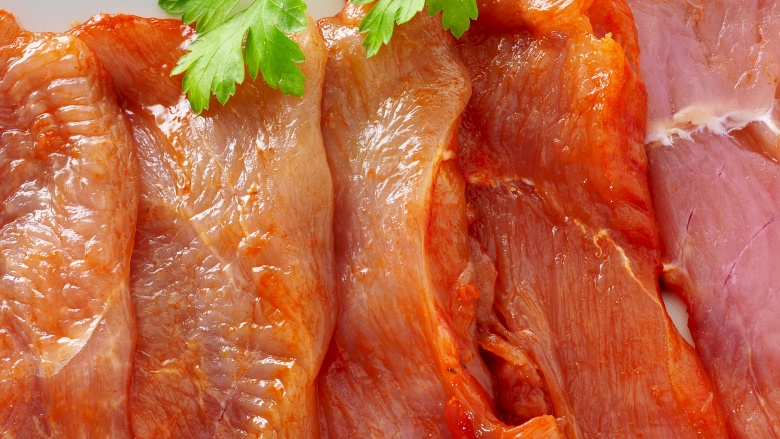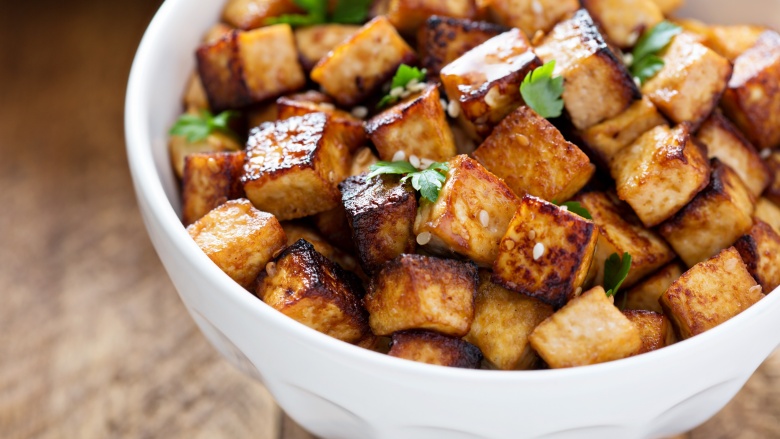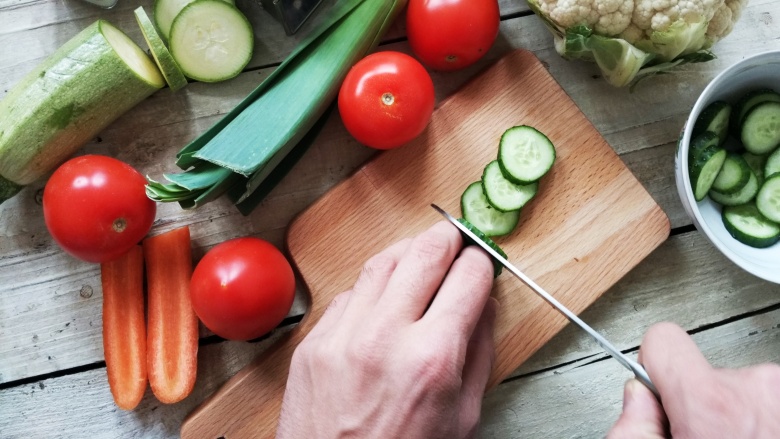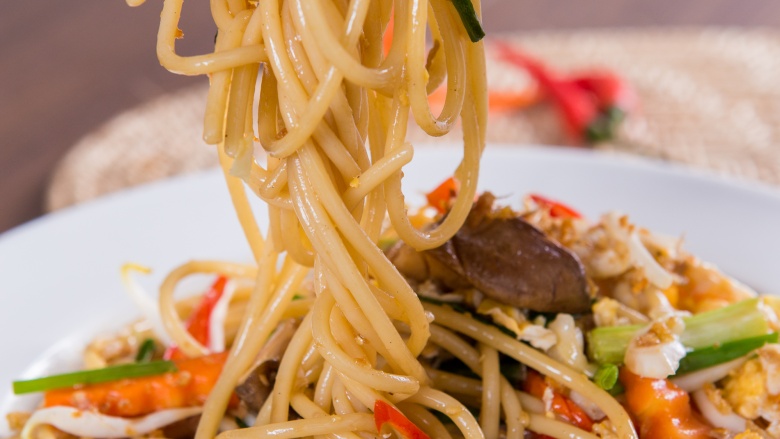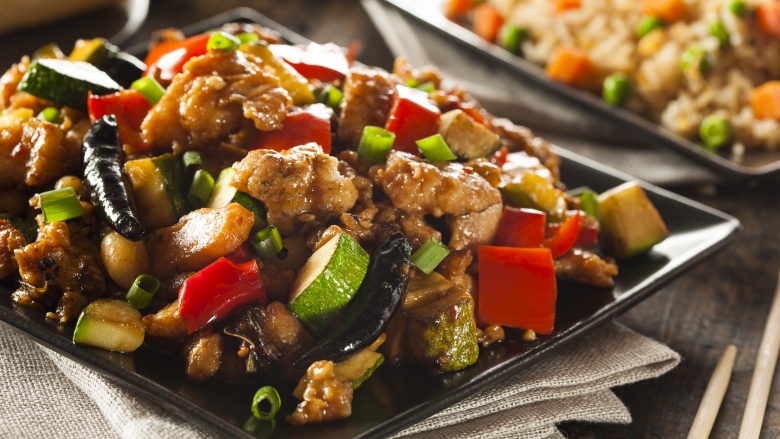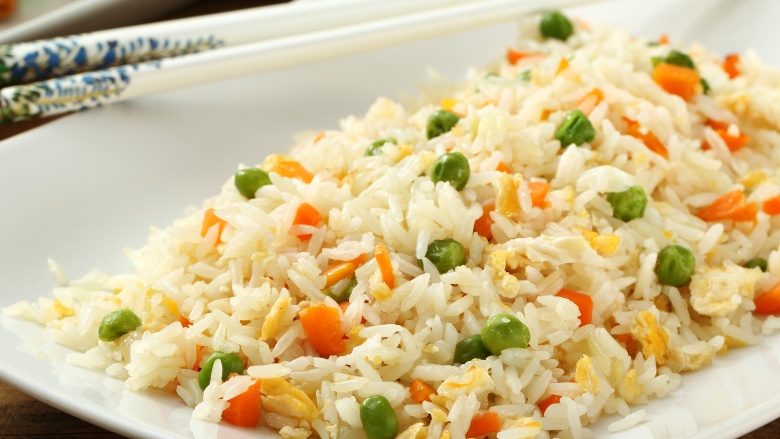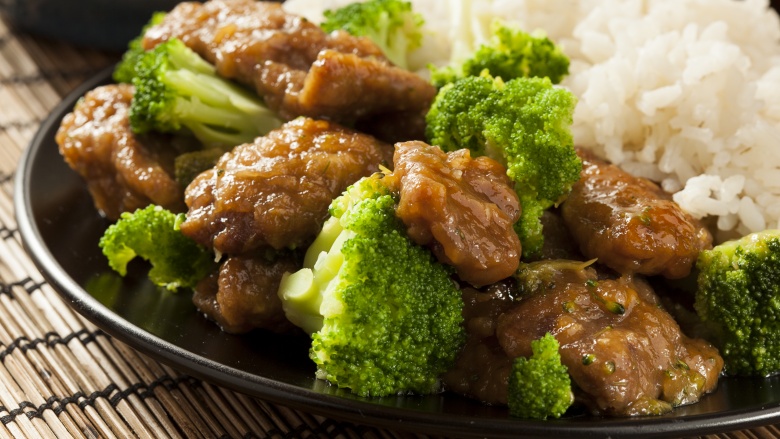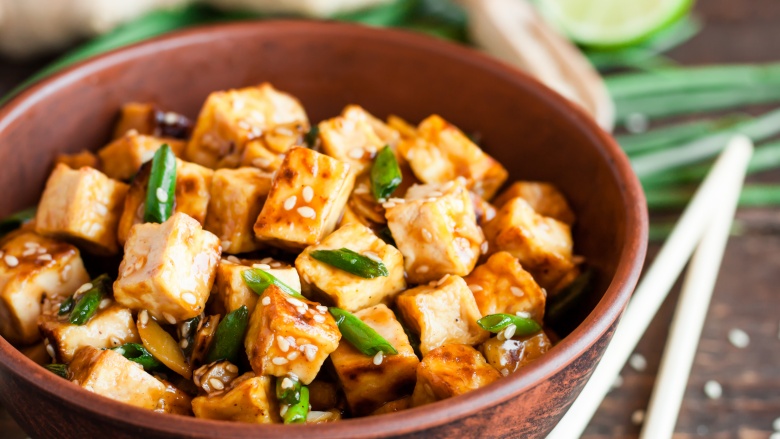How To Make Perfect Panda Express Meals At Home
We may receive a commission on purchases made from links.
As an American-born woman of Chinese descent, I have long made peace with the realities of Westernized Chinese food. As a matter of fact, my immigrant grandparents own an eatery that serves this specific genre of cuisine. Are the flavors less nuanced and not as authentic? Sure. Is it generally greasier and hence fattier? Probably. Is it also an extremely sought-after fast food choice? Definitely. Salty, sauced-up, and mainstream, this popularized category of Chinese food can range greatly in quality. Even so, I can't argue that it is indeed a successful market.
The ubiquitous Panda Express is one notably big player in this very lucrative market of casual Chinese fast food. With nearly 2,000 locations in North America and other parts of the world, this thriving chain has been a minority- and family-owned business since 1983. Even so, in 2015, Panda Express's billionaire co-CEO Peggy Cherng told The Los Angeles Times that their "business mentality is to focus on people and food and less on profit." In many ways, the story of Panda Express very closely mirrors the rise of Americanized Chinese food. It was essentially born of the necessity for Chinese immigrants to adapt dishes to suit American tastes.
So let's talk about the food. From General Tso's chicken and broccoli beef to chow mein and fried rice, Panda Express unabashedly serves a wide array of these Westernized Chinese dishes. Even as food culture has evolved and grown significantly in recent years — with enthusiasts seeking more authentic dishes and shunning their Americanized versions — the restaurant chain continues to hold on strong because it offers the kind of nostalgic comfort fare Americans have grown accustomed to eating throughout the 20th century. I for one am as comfortable eating braised chicken feet at a traditional tea parlor in Chinatown as I am devouring a plate of orange chicken.
So can you whip up your favorite Panda Express takeout dishes from the comfort of your own kitchen? Hell yes, and I'm here to tell you how.
Have the right tools
Many Chinese takeout dishes are cooked in a wok. Get one. It looks super pro and it will help you master the art of quick cooking over high and medium heat — a basic tenet of Chinese preparations. Having cooked in professional kitchens and eaten copious amounts of all varieties of Chinese food, I can confidently attest to this. A wok is a special pan with high, curved sides that allows you to cook food intensely on the bottom surface where it's hottest and also push other ingredients up to the sloped sides where they can cook at more moderate heat. It's a must for many stir-fry recipes that require you to cook denser vegetables alongside more delicate ones.
Stock up on ingredient staples
As you experiment with different recipes, you'll begin to notice that many of the usual suspects are listed in the ingredient sections when it comes to Chinese food. Smart and economical, this allows you to prepare various dishes with many of the same ingredients. For your next visit to the supermarket, you may want to stock up on these cooking essentials for your Asian pantry.
Shaoxing rice cooking wine: Made from fermented rice, it is widely utilized in Chinese cooking. Light brown in color and delicately aromatic, it lends a nutty essence to a wide array of meat and vegetable dishes.
Sesame oil: This cooking oil is made from pressed sesame seeds and boasts both deep flavor and earthy fragrance. It is used in Chinese cooking to add a toasty dimension as well as enhance flavors.
Hoisin sauce: With its dark, almost black color, hoisin sauce is the perfect combination of sweet and salty. Made with wheat or rice starch, this special sauce also includes soybeans, vinegar, sugar, salt, and other spices. Its thick texture makes it ideal for glazing meats and incorporating into stir-fry dishes. It is sometimes combined with a touch of hot sauce and used as a dipping sauce.
Oyster sauce: Made with cooked down oysters, salt, and sugar, oyster sauce is one of the most commonly used ingredients in stir-fry dishes. From noodles like chow mein to meaty favorites like Kung Pao chicken, this dark brown sauce lends irresistible savory flavor.
Soy sauce: You'll find soy sauce bottles atop most tables at Chinese restaurants, of course, but is also an oft-used seasoning during cooking. Made from fermented soybeans, the widely recognized sauce adds salty dimension to meats, vegetables, and fish.
Ground white pepper: Unlike black pepper, white pepper has a distinctly sharper, spicier flavor that goes well with Chinese food. Since it tends to get bitter if cooked for too long, you'll often use it after the food has finished cooking to add a bit of fruity heat.
Preparation is everything
Since so much of Chinese cooking requires adding different components into the pan at different times, you are better off when you have all of your ingredients prepared and ready to go before you turn on the stove. Meat and vegetables should be washed and cut. Sauce should be made and set aside. Trust me. You'll feel much more in control if you have your mise en place game on strong.
Use fresh meats and produce
It seems like common sense to say so, but your Chinese dishes will turn out much more flavorful and pro if you start out with fresh ingredients. Even though some recipes may call for cured meats or pickled vegetables, many will shine due to the use of fresh meat, poultry, seafood, and vegetables. By doing so, you maximize the potential of the dishes, but you also get to control the amount of sodium that goes into them.
Marinate meat
When using fresh meat in a recipe, always marinate it first. This helps to tenderize the meat and imbue it with flavor. If the dish calls for coating your protein with cornstarch or flour, you can do so after marinating.
Drain your tofu
If using tofu, be sure to drain it completely and pat it dry with a paper towel. Any moisture will prevent the tofu from browning well. You definitely want golden tofu, so don't skip this step.
Check the size
Meat and vegetables cook at a more consistent rate if you cut them into pieces that are close to uniform. If the pieces are all different sizes, they are more likely to cook unevenly.
Panda Express-inspired dishes to satiate your next craving
Ready to head into the kitchen and put these tips to good use? To help you get started on creating addictive Chinese takeout staples a la Panda Express, here are some well-tested and well-loved recipes to try out.
Chow mein
This traditional recipe from Recipe Tin Eats possesses the key components of good chow mein. It's brimming with vegetables and packed with protein, thanks to the addition of chicken. The sauce embodies the perfect balance between sweet and savory, coating the tender strands of traditional noodles. Do it!
Kung Pao chicken
This Kung Pao chicken recipe from PBS will convince you to start making all of your favorite Chinese fast food dishes at home. First of all, it's actually fast. Dark meat is marinated in a sweet and salty concoction made with Sichuan peppercorns for added heat. A quick and easy stir-fry treatment in the good old wok results in perfectly coated chicken pieces loaded with peppery, spicy, salty flavor.
Fried rice
This irresistible recipe for Chinese fried rice will turn into your new favorite way to use up leftover rice. Cold, cooked rice is combined with carrots, onion, and peas in a light sauce for grains that are full of flavor — not soggy, sad, and over-seasoned. This dish basically tastes like pure comfort. You can have it all in about 20 minutes to boot.
Broccoli beef
Ah, broccoli beef. This class menu item is made glorious in this streamlined recipe from Rasa Malaysia. Marinated beef is tender and flavorful, broccoli florets are crisp but tender, and the sauce is bold but not overpowering. What can I say? This one's a winner all around.
Spicy tofu
Known for being bland and rubbery, tofu can be hard to deal with if you're not used to cooking with it. I like this super quick spicy garlic tofu recipe because the simple prep really gives this stigmatized ingredient a chance to shine. This dish is spicy, savory, and fragrant. The tofu is the ideal blank canvas.
With these tips and recipes in mind, I have no doubt you'll be whipping up your own Panda Express-inspired dishes in no time. The next time you're craving lo mein, fried rice, or that delicious beef with broccoli, run to the kitchen and make it happen.

